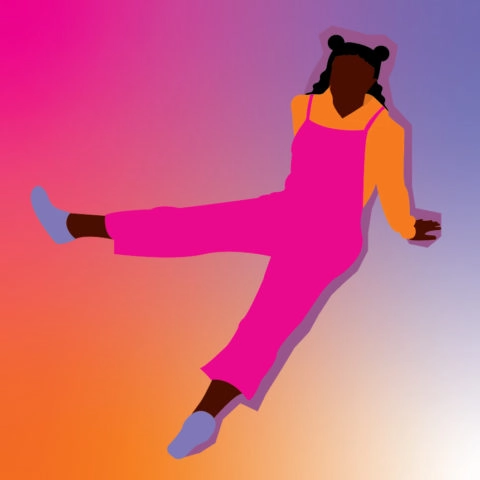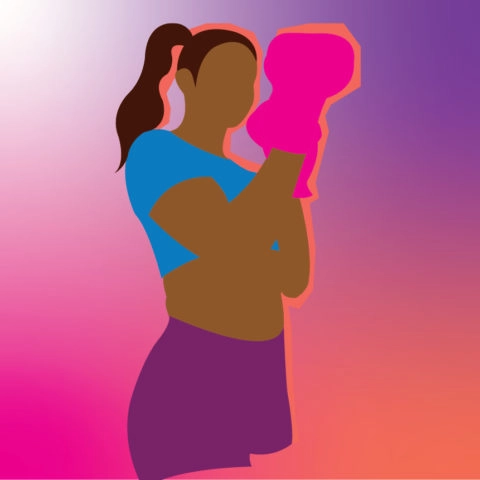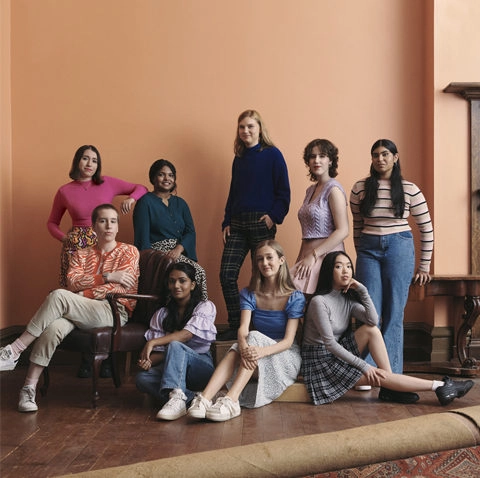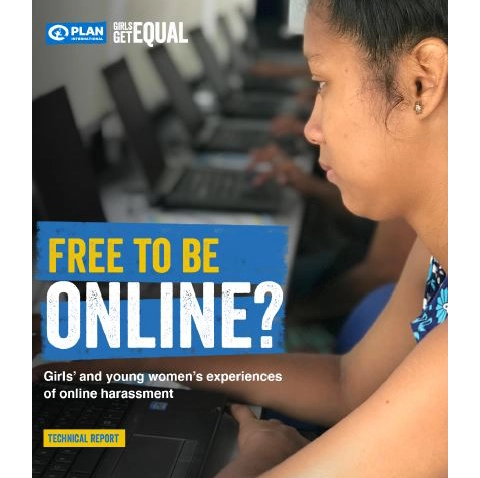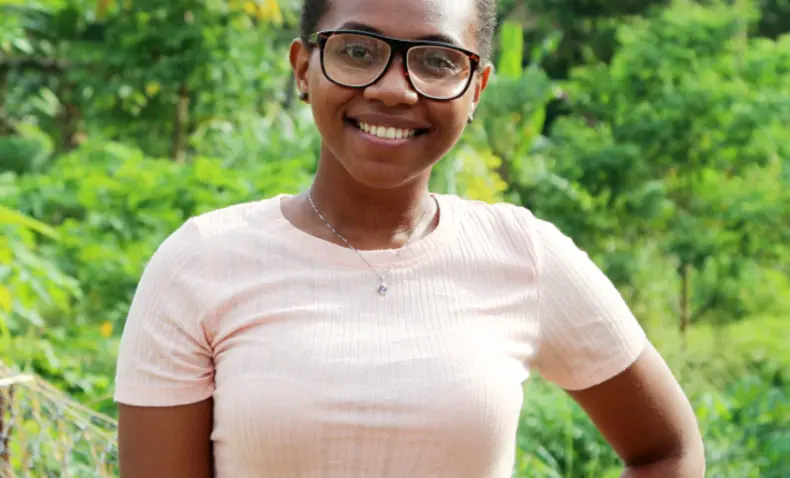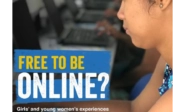All illustrations by Plan International youth activist Siena Bordignon.
About Plan International Australia
Put simply, we’re the charity for girls’ equality.
We tackle the root causes of poverty, support communities through crisis, campaign for gender equality, and help governments do what’s right for children and particularly for girls.
We are here to ignite the creativity, talent and ideas of girls in all their diversities. We are informed by evidence, and always learning.
A better now for her. A better future for everyone.
This is what we stand for. Will you join us?
About this guide
Social media can play a really important part in our lives. Platforms like Facebook and Instagram offer opportunities to connect with friends, make new ones, and express ourselves.
We can find communities that aren’t restricted by geography, that rally around shared interests and passions.
But social media is not without its drawbacks. As well as positive opportunities to connect, social media presents us with content that may negatively affect our wellbeing and people who are intent on trolling or harassing us.
Our youth activists created this guide to help you take control of your experiences online, using their own experiences and the safety tools provided by Facebook and Instagram.
For more information about the safety resources available, check out:
Find your people: How to curate a space that works for you
So, what does a safe space look like? How can we curate one? Well, keep scrolling and you will find out!
Safe spaces online are sites where we can connect free from harassment and violence. Spaces where we feel free and able to communicate and express ideas without fear of intimidation, marginalization or silencing. These are spaces for self-expression – they allow you to be yourself! For those of us who struggle to find like-minded people offline, these online spaces can be even more important. A great online community can help us navigate challenges, acknowledge and validate frustrations and help us feel seen and celebrated.
And if we want to create a healthy, safe space for ourselves on social media, the people we connect with make all the difference. Like our offline friendships, the people we connect with on social media can shape the person we become.
Check someone’s page before you hit follow
Check out a person or organisation’s bio on their profile page to see what you can expect – is that the kind of content you want in your feed? If it’s someone famous, or a prominent public figure or org also look out for the blue tick next to a user’s name next to their name. This confirms you’re following the *actual* person and not a fan account!

Visit the profile page for the account you want to follow – what does their bio tell you? If they’re public, have a look at what they usually post. Do you want these posts popping up in your feed? How do they make you feel? What do they bring to your world? If the profile belongs to a public figure or organisation a blue tick, like this one, will let you know that they are who they say they are.

Have a quick look through the content of a Facebook page or group that you’re going to follow. What are the posts like? Is this content that you want to engage with? If the page belongs to a public figure or organisation a blue tick, like this one , will let you know that they are who they say they are.
Find your people through hashtags
Hashtags are also a great way to find like-minded people. Searching for positive words via hashtags will bring up accounts and pages which share positivity.

Some commonly used hashtags for inspiration include:
#YouAreNotAlone #SelfCare #LoveWins #BeKind #YouMatter #SelfCare #Deadly #AlwaysWasAlwaysWillBe #LGBTQIAustralia

Click Groups on your Facebook menu to discover some of the popular groups near you, along with suggested groups you may like, and categories to search for groups.
Help the right people find you, or not
The same works the other way – as you follow people and engage in communities online, people may want to connect with you. The important thing to remember is that you get to decide where and how people can connect with you. For example, you might decide to keep your Facebook for close friends and family, but decide to accept some followers on Instagram. You can use your Instagram bio to let people know what to expect – whether that’s sharing your art, about a hobby, or just photos of your dog!
You also get to decide how much information to share and with who. From a security perspective, when you’re deciding what you want to share, it’s important to think about all the pieces of information people can find about you and how they fit together. To keep yourself safe online the Australia’s E-Safety Commissioner recommends keeping personal details like your address, email address, phone number and birthdate private.

If you want to make your Instagram account private (so that only followers you accept will see your posts), go to your Instagram profile page, access your Settings menu, then select Privacy. Scroll to Private Account and move the slider to the right. The slider will turn blue once the account is private.

Privacy Checkup guides you through some of your privacy and security settings, so you can review your choices to help make sure that you’re sharing with who you want. To access this feature, click the … button on your Facebook profile, and 14 select View Privacy Shortcuts.
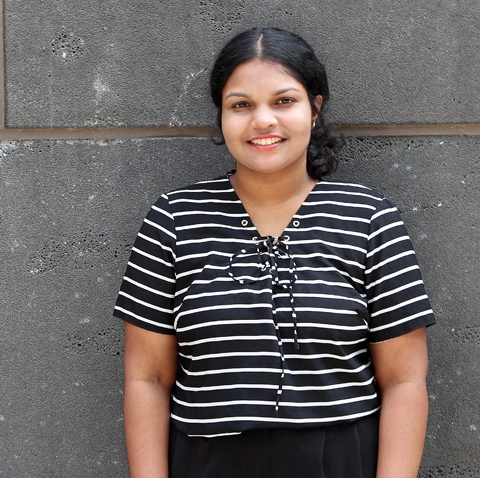
Kayshini, youth activist
“I believe that young people are entitled to a safe place online- one in which they can be themselves and express and share their views comfortably. The network you have built in your social media accounts ultimately define the person you are- they play a big influence on our everyday lives. As such, I believe that young people should be aware of how they ‘curate’ their safe space- and how they can block any negativity coming their way. I think it is particularly important for young people to not publicise their personal information as this can come with hefty consequences- including cyber bullying and racial abuse.
Having a positive social network can ultimately lead to a more inviting and healthy safe space. The influencers and people you follow on social media can contribute to a stimulating experience. It should be noted that everyone has differences in opinions, and we should not judge or run down another person just because they have a different view or mindset about a particular topic. At the end of the day, social media pages are a platform where people can contribute their thoughts, ideas and knowledge in a meaningful and respectful way.”
Online Groups and Communities: Find Your Own Space (and Don’t Be Afraid to Say Goodbye)
We hear buzzwords like ‘safe space’ and ‘claiming up space’ constantly these days, but what does it actually mean when it comes to social media? And should we take it seriously?
The answer is, yes.
I don’t think that I understood the meaning of safe spaces until my privacy and safety online was violated, and I want to make sure that you never get to that point.
So, what is a safe space online? And when is the right time to walk away from something that isn’t.
Moderating a group
If you’re setting up a Facebook group or chat specific to you and people who have a similar identity/experience/hobby/interest etc. as you, then make sure there is more than one moderator so that it can be more democratically managed. You can find Facebook’s tools and resources for communities, here.
Private vs. public groups
It’s hard sometimes to switch our accounts to private, but particularly when creating a safe space, consider making those groups or group chats private, so that not anyone can just enter. Or perhaps, if it’s a public page, consider putting a few questions so that moderators can determine someone’s vibe before they are let in.
Take a Break
Especially as we go in and out of lockdowns, it is easy to spend hours every day on social media. But it’s important that we take a break, and don’t spend all our time on there (yes, even when we’re in lockdown).

In the Instagram Settings menu, click on Your Activity. Or in Facebook, go to the Settings & Privacy menu. You can see all the time that you are spending on the app and also set daily reminders to limit your time.

You can also update your notification settings here, so that you’re more in control of when you check back in.
Most phones on iPhone or Android also now have built in features where you can set time limits on apps. Google how that works on your phone and try it!
Walking Away
The thing about trolls and unkind people online is that they love to get a reaction. Don’t let them do that to you. If it is your online space that you’ve set up or a space where people are like-minded to you, then remain where you are and ask the moderators to remove the person.
However, if you stumble into a space that isn’t kind or if a space sours when too many random people get let in, then know that it’s okay to walk away from an online community. The most important thing is having friends around you.
You can log off, leave that particular group or even just turn off your notifications for a while and go do something else. Social media will still be there when you get back.

To block someone on instagram, tap … on their profile, then tap Block. You can restrict someone by tapping … on their profile, and then tapping Restrict.

Click the downward arrow at the top-right of any Facebook page. Select Blocking and in the Block Users section, enter the name of the person you want to block and click Block. You can also go to the person’s profile and select Block from the … menu in the bottom right of their cover photo. When you block a person, they will not be able to view your Timeline activity, message or tag you, or send you another friend request (blocking automatically unfriends the person). You will also not be able to see their activity. They will still be able to see your public information and activity within apps or groups.
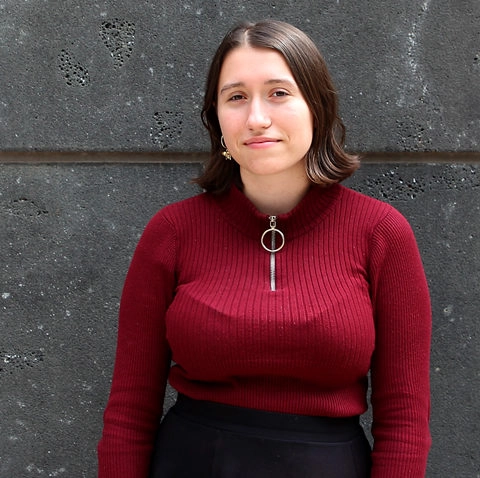
Margaret, youth activist
“I think social media is so important for young people to engage with each other and interact (particularly in our still COVID affected world). I’ve been using social media since I was 12 years old, and these days it is such an integral part of my work.
For young people, it is a way of expressing ourselves and for creative types like me, it’s an important tool in the development of our careers. It is so important to create positive spaces online, where you feel supported and loved. If you’ve got negative vibes coming in, cut them out!
However, that means that it can not only be addictive, but it can feel like if you aren’t on it everyday, you might be behind the curve. I think learning to choose when you spend your time on social media is such an important part of growing up today.”
Take control of your online spaces: Managing comments and messages
You and I both know that being a woman online is hard. What should be a safe and enjoyable experience is so often derailed by harassment and abuse.
So, how can you take back control of your online spaces?
Comments

At the moment you can’t report abusive comments others may leave on your own posts – so ask a friend to do it for you. Once it’s been reported, click on the comment to delete it.
You can control who can comment on your posts, whether that’s anyone, only your Friends or only specific people. You can also hide comments on your page posts by double-tapping the comment and selecting “Hide”. You may also like to “Snooze” or “Block” someone you no longer wish to receive comments from. Facebook has more info on how to do that, here.
Before deleting any online harassment, take a screenshot. Keeping records early on is super helpful if things escalate.

There’s an arsenal of choices here. Tap on the comment to report it or delete it. You can also choose to unfollow or mute that account. Additionally, you can restrict that user’s comments from being visible to other users, (and don’t forget the classic block).
And for your favourite comments, you know, the sweet ones your friends leave that make you feel all warm and fuzzy inside, you can pin them – so everyone can see the love.
Messages
I’ll be the first to admit it feels GOOD to point out all the flaws in a troll’s illogical argument. But, are they really worth your time? Will you actually be able to shift their perspective?
You have no obligation to respond to abusive messages. Trolls thrive off engaging with you. So, don’t give them what they want. Starve them with your silence.

Instagram released some new tools this year, including one called ‘Hidden Words’ which uses a pre-defined list of offensive terms (but you can also create your own list) so that you don’t even have to see these messages. All DM requests that contain these offensive words, phrases, or emojis – whether from your custom list or the predefined list – will be automatically filtered into a separate hidden requests folder. If you choose to open the folder, the message text will be covered so you’re not confronted with offensive language, unless you tap to uncover it. You then have the option to accept the message request, delete it, or report it.
And that block button is always a couple of taps away.
![]()
In Messenger, you can also tap on a message to Ignore the conversation. This disables notifications and moves the conversation from your inbox to your Filtered Messages folder. You can read messages in the conversation without the sender seeing if they’ve been read. The sender will not be aware that you have chosen to Ignore their messages.
At the end of the day, these are YOUR profiles, YOUR online spaces. You don’t have to tolerate any abuse or harassment – even if it’s something as little as a sour joke or a petty dig. Cut that negativity off as soon as it arises with these tools.
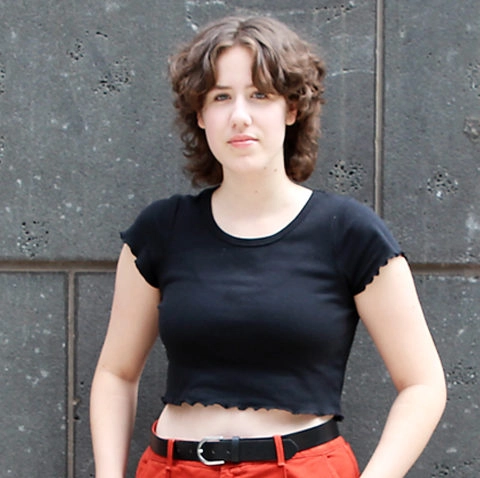
Siena, youth activist
“The online environments young people are exposed to have a massive influence on our health and wellbeing. Yet our education systems fail to provide a structure which facilitates healthy online engagement. Education is key to ensuring young people develop healthy relationships with technology. Young people must understand how social media giants profit off our attention and time. We must have an intimate knowledge of the tools available to uphold online boundaries.
There are three necessities required to shape a safe online world. Lawmakers must ensure that severe online abuse is met with consequences. Social media platforms must make available tools that effectively combat the ever changing face of online harassment and abuse. And schools must ensure that young people are empowered to engage in online spaces responsibly.”

